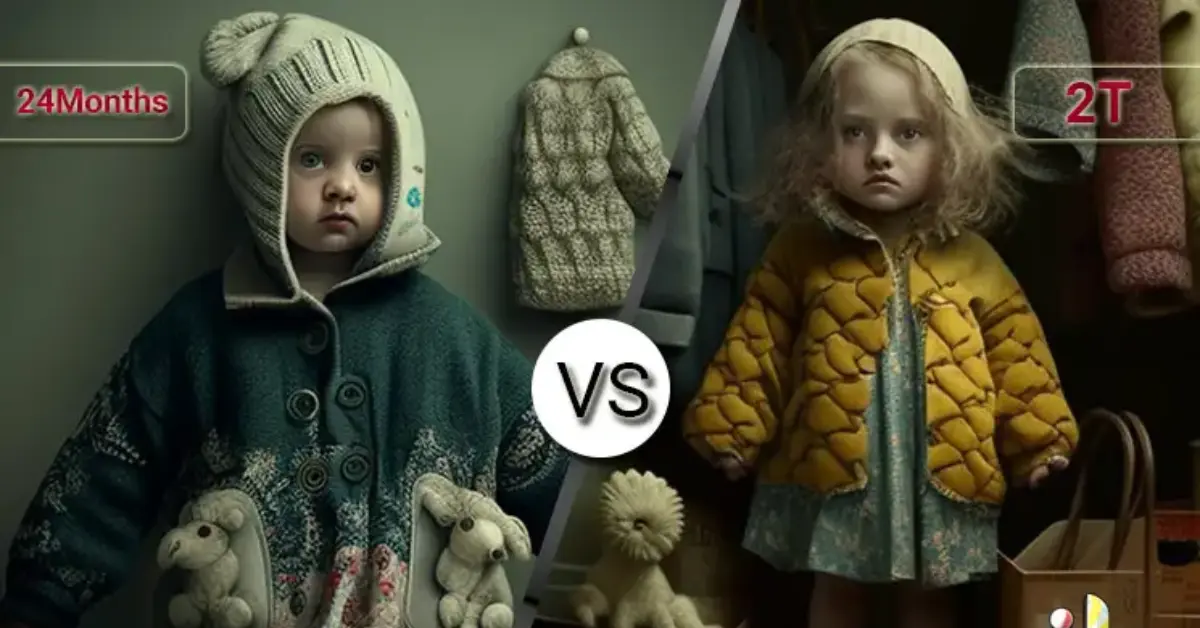When shopping for children’s clothing, parents often encounter sizes labeled as 24 months and 2T. While they may seem similar, these sizes cater to different stages in a child’s growth. Understanding the differences can help in selecting the most comfortable and appropriate clothing for your toddler.
Definitions 24 Months and 2T
Definition of 24 Months:
- Target Age: Generally for children aged 18 to 24 months.
- Fit: Designed for babies who may still be wearing diapers. The cut accommodates a diaper’s bulk.
- Style: More babyish in design, emphasizing comfort and ease of changing.
Definition of 2T:
- Target Age: Usually for children aged 2 to 3 years.
- Fit: Cut for toddlers who may be starting potty training. Less room for a diaper and more tailored to a standing child.
- Style: More toddler-like, reflecting a growing child’s activities and movements.

Table Comparison
| Feature | 24 Months | 2T |
|---|---|---|
| Age Group | 18-24 months | 2-3 years |
| Diaper Accommodation | Yes | Less so |
| Cut | Roomier, suitable for crawling | Tailored for walking and running |
| Design | Baby-oriented (e.g., snaps for easy changing) | Toddler-oriented (e.g., more pockets, detailed designs) |
| Length | Generally shorter | Slightly longer to accommodate growth |
Frequently Asked Question (FAQs)
Q: Can a 2-year-old wear 24-month clothes?
A: Yes, but it depends on the child’s size and whether they’re still in diapers. 24-month sizes are generally more diaper-friendly.
Q: Should I buy 2T if my child is tall for their age?
A: Yes, 2T sizes are longer and provide a better fit for taller toddlers.
Q: Is there a significant price difference between 24 months and 2T clothes?
A: Generally, no. However, pricing can vary based on brand and style.
Conclusion
While 24 months and 2T sizes may seem interchangeable, they cater to different stages of a child’s development. Choosing the right size ensures not just a better fit, but also appropriateness in design and comfort for your child’s activities. Understanding these nuances makes shopping for your growing toddler more efficient and satisfying.
